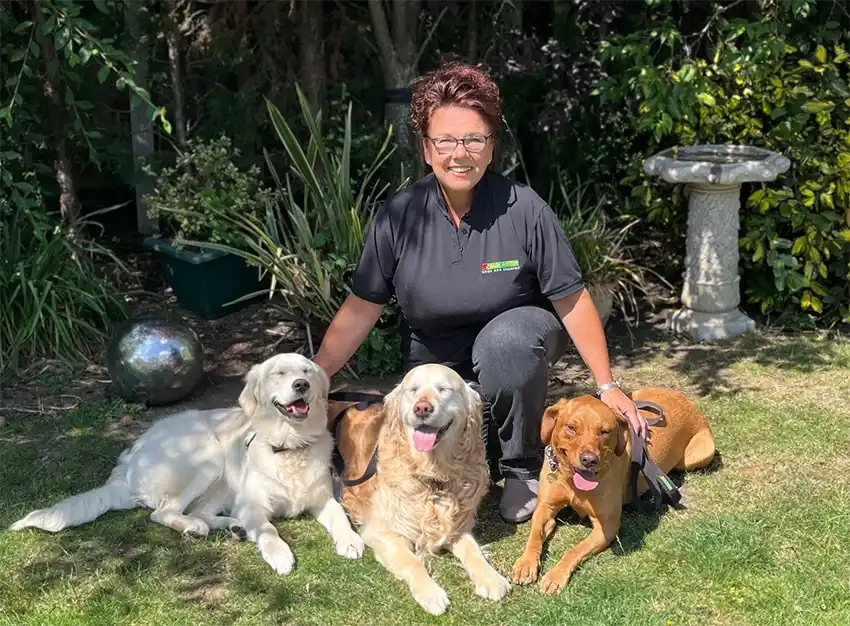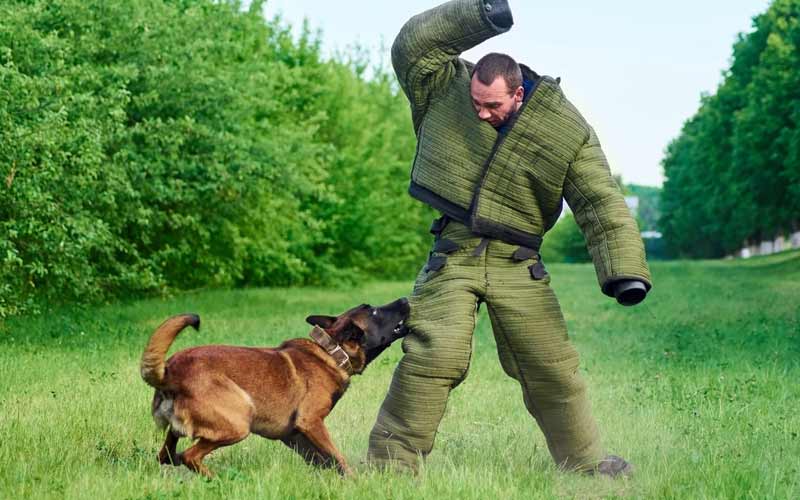How to Incorporate Dog Training into Your Daily Routine
How to Incorporate Dog Training into Your Daily Routine
Blog Article
The Ultimate Guide to Pet Dog Training: Change Your Pet's Actions
Effective pet dog training is essential for promoting an unified connection in between pets and their proprietors. This overview not only aims to outfit you with the necessary devices to change your canine's habits yet also welcomes you to discover how these foundational principles can lead to a much deeper connection with your family pet.
Recognizing Dog Habits
Understanding canine habits is necessary for reliable training and an unified relationship between dogs and their owners. A canine's behavior is influenced by a combination of genetics, environment, and experiences. Dog training. Acknowledging these variables permits proprietors to customize their training approaches to satisfy the specific needs of their pet dogs
Dogs communicate largely via body movement, articulations, and faces. A wagging tail can suggest excitement or happiness, while a put tail might indicate worry or submission. Observing these cues makes it possible for proprietors to react properly, reinforcing positive actions and resolving adverse ones successfully.
Furthermore, understanding the social framework of dogs can give insights right into their behavior. Pet dogs are pack animals, and they prosper in a structured setting. Establishing clear boundaries and regular guidelines can stop complication and promote a feeling of safety.
Moreover, acknowledging the all-natural instincts of pet dogs, such as need to dig or go after, is important. These reactions can be redirected with ideal outlets, such as play or exercise. By thoroughly understanding these behavioral elements, proprietors can cultivate a positive training experience, eventually bring about a obedient and well-adjusted canine buddy.
Crucial Training Methods
Efficient pet training relies on a variety of necessary strategies that can significantly enhance the knowing process for both the canine and the proprietor. One basic technique is positive reinforcement, which involves gratifying desirable habits with deals with, appreciation, or play. This technique urges pets to duplicate the actions that lead to positive outcomes, cultivating a trusting partnership between the pet dog and owner.
Another secret technique is uniformity in commands and expectations. Making use of the very same verbal signs and hand signals assists the dog comprehend what is needed, decreasing confusion and promoting quicker learning. Furthermore, establishing clear boundaries and rules is essential for effective interaction.
Socializing is likewise a necessary element of training. Exposing dogs to various atmospheres, people, and other pets assists them establish appropriate social abilities and minimizes stress and anxiety in unfamiliar scenarios.
Last but not least, persistence and timing are vital. Educating sessions must be brief yet regular, ensuring that the pet stays engaged and responsive. By employing these crucial methods, proprietors can produce a structured and favorable training experience that promotes great behavior and enhances the bond with their canine companions.
Developing a Training Arrange
How can a well-structured training routine enhance a pet dog's learning experience? A training routine provides consistency, making certain that canines obtain regular, concentrated direction. This predictability aids canines recognize what is anticipated of them, strengthening their knowing and allowing for better retention of commands and habits.
When developing a training timetable, it is vital to take into consideration the canine's age, type, and specific character. Young young puppies might benefit from shorter, more regular sessions, while adult canines might love longer, much less regular training durations. Incorporating a variety of tasks can likewise maintain the sessions engaging, stopping boredom and promoting excitement for knowing.
Furthermore, scheduling training sessions at certain times of the day can help strengthen a routine. As an example, matching training with daily strolls or playtime can create a favorable organization with knowing. It is also crucial to include time for support, such as look at this website deals with or appreciation, to award wanted actions without delay.
Last but not least, flexibility is crucial. While consistency is crucial, being adaptable to the pet dog's mood or power level can boost their learning experience. A well-crafted training routine eventually lays the structure for reliable communication and a stronger bond between the pet dog and owner.
Typical Training Obstacles
In spite of having a well-structured training routine, dog owners frequently come across various obstacles throughout the training process. One usual problem is incongruity in hints and commands. When multiple member of the family utilize various terms or tones, a dog might become baffled, hindering its capability to learn properly.
One more frequent challenge is distraction. Dog training. Pet dogs are naturally interested creatures, and external stimulations such as various other pets, sounds, or people can divert their focus throughout training sessions. This calls for owners to produce a regulated setting or progressively present disturbances to strengthen emphasis
Additionally, differing power levels can influence training results. High-energy pet dogs may battle to settle and focus, while extra laid-back look at this site breeds could need added inspiration to engage. Tailoring the training approach to fit the private pet dog's character is important for success.

Building a Solid Bond
A strong bond between a canine and its owner is crucial for effective training and overall well-being. Dog training. This connection promotes trust fund, which is vital for effective interaction during the training process. When a canine really feels safe and connected to its proprietor, it is a lot more likely to react positively to cues and commands
To build this bond, consistency is vital. Establishing a regimen that includes routine feeding, workout, and training sessions aids create a sense of stability. Additionally, positive support methods, such as treats, praise, and play, strengthen desired behaviors while strengthening the psychological connection.
Socializing is one more vital aspect of bond-building. Revealing your dog to different settings, individuals, and various other pets aids them feel much more comfy and certain, boosting the bond with their proprietor. Involving in activities with each other, such as walking, playing fetch, or joining obedience training, advertises synergy and mutual pleasure.
Final Thought

Understanding canine behavior is essential for reliable training and an unified partnership between dogs and their owners.Effective pet dog training relies on a selection of necessary strategies that additional resources can substantially enhance the knowing process for both the proprietor and the canine.Despite having a well-structured training timetable, dog proprietors often come across various obstacles during the training procedure.In final thought, reliable dog training depends on a thorough understanding of canine habits, the application of necessary methods, and the facility of an organized training schedule. By highlighting favorable support and consistency, canine owners can considerably improve their pets' habits, eventually guaranteeing a harmonious relationship and promoting the wellness of both the dog and its atmosphere.
Report this page